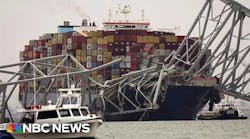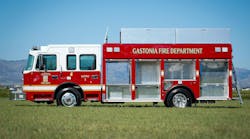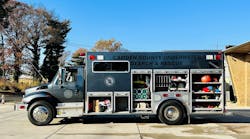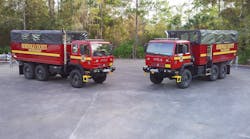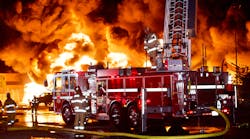Incident support units have been around the fire service in various iterations for decades. Many of these units are tailored to meet the specific needs of a department or region, and Spokane County, WA, Fire District 8’s unit, first placed in service in 2006, was no exception. Outfitted with an SCBA cascade system, restroom and rehab supplies, the unit proved itself of value for several years, but as the department became increasingly aware of and engaged in firefighter rehab best practices, the time was right to replace the aging unit. However, finding a unit that would do everything the agency needed it do proved to be challenging and potentially very expensive, with new units being quoted in the $300,000 to $400,000 range.
Finding a unit
With the support of its Board of Fire Commissioners, the department formed a committee of members well versed in firefighter rehab and asked them what features were most important to incorporate in a new unit. Once the desired features were specified, the search for the right vehicle began.
Due to limited funds, the committee members knew they needed to be creative and find a used unit that wouldn’t break the department’s budget. Eventually, a used heavy rescue unit was located through a broker in Pennsylvania. In addition to having the potential for the committee’s desired modifications, the unit had a high-pressure SCBA cascade filling system, a 25-kW PTO-driven generator, ample compartment space, 1,500-watt quartz light towers at each corner, and a telescoping, remote-controlled 15-foot light tower. Powered by a 300-hp Cummins diesel engine, the unit also included interior seating for personnel to get out of the noise and elements of the emergency scene.
Excited at having found a potentially suitable vehicle, the department sent a team—its chief of support services, support services coordinator, a fire commissioner and fire mechanic—to view the unit in person. Upon seeing that the vehicle met the committee’s basic needs and passed a thorough inspection, a fair vehicle price and shipping cost was negotiated.
Getting the unit into service
Once the unit arrived in Spokane, work began in earnest to incorporate the committee’s recommended changes. The unit was sent to a local fabricator, and the existing SCBA cascade system was removed, and the bottles were hydro-tested and then rearranged to best utilize compartment space. A used RevolveAir SCBA-filling station was added to another compartment, as well as SCBA bottle storage racks. A local RV dealer modified the unit’s large rear compartment area to create a restroom and added retractable awnings with underside LED lighting to both sides of the unit. A galley area was created inside to include a small refrigerator, sink, microwave and hot water dispenser. The unit’s existing abundant compartment space was perfect for accommodating the loose equipment carried for rehab activities, including EMS supplies, a pop-up awning tent, chairs, tables, and portable cooling fans. Finally, to facilitate gross decontamination, an outside hot water shower was added.
Since being placed in service, the department’s new incident support unit has already proven to be an asset for the entire region. The unit is staffed by the department’s Support Services volunteers and is automatically dispatched on structure fires and multiple-alarm wildland incidents. It is also available as a regional asset to any requesting local agency for incidents where scene lighting, SCBA air-refilling and/or firefighter rehab services are desired.
A shared asset
An incident support unit may be right for your department or as a shared regional asset. Incident support units can provide valuable on-scene services to support your members and can also be an excellent fit for volunteer members—both new members who don’t have the ability or interest to participate in structural firefighting and seasoned veterans who are winding down their fire service careers. By taking the time to get member input and adopt best practices in firefighter rehab, you can create a unit that fits your department’s needs and doesn’t break the bank.
About Spokane County Fire District 8
Located in eastern Washington State, Spokane County Fire District 8 provides a full range of services—fire suppression, EMS, fire prevention, education and investigative services—to 21,000 citizens in a 110-square-mile area in south Spokane County. SCFD8 members responded to 3,215 incidents in 2017 from the District's four fire stations staffed 24 hours a day with a combination of career, part-time, and volunteer and resident volunteer personnel.


